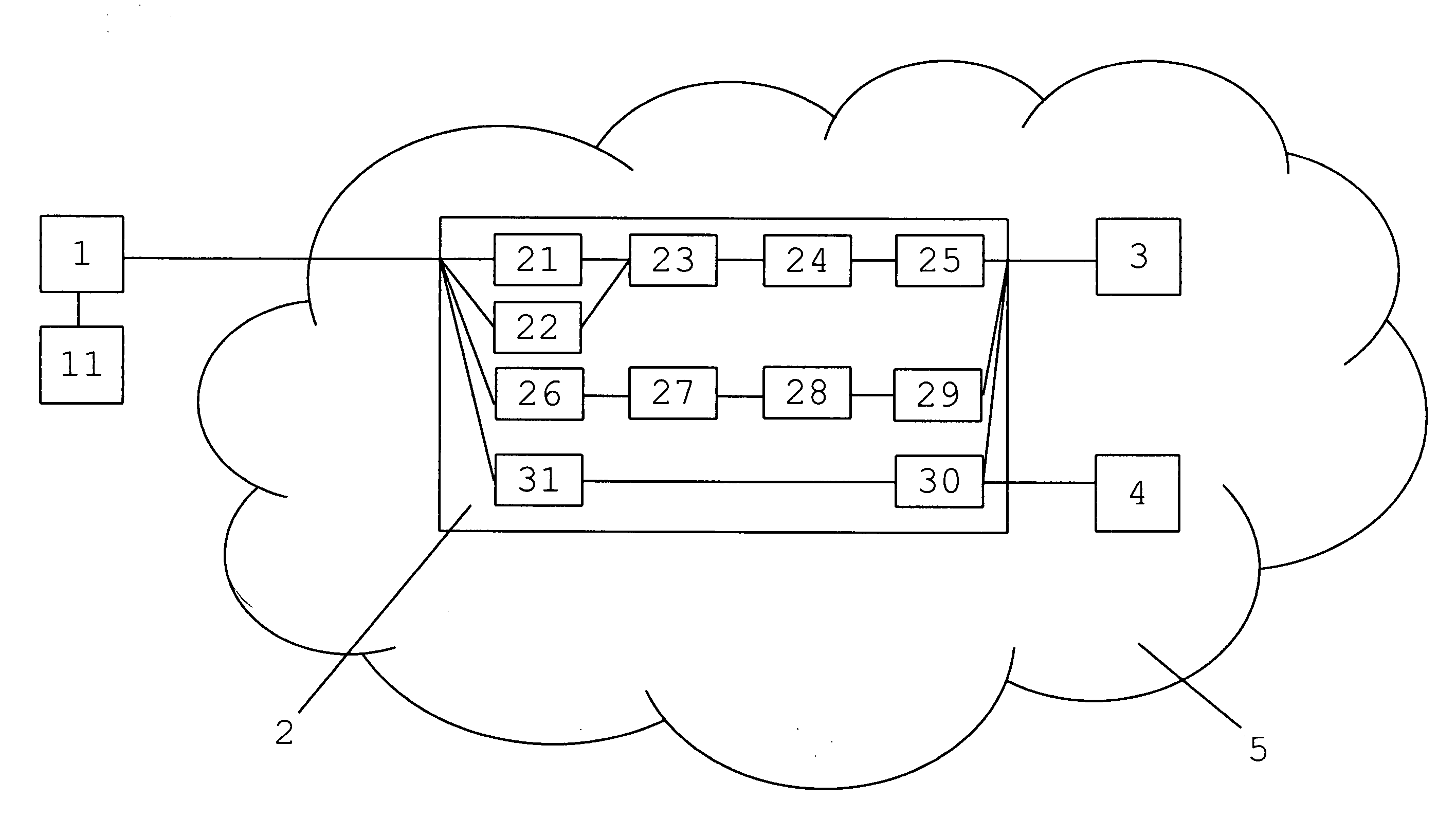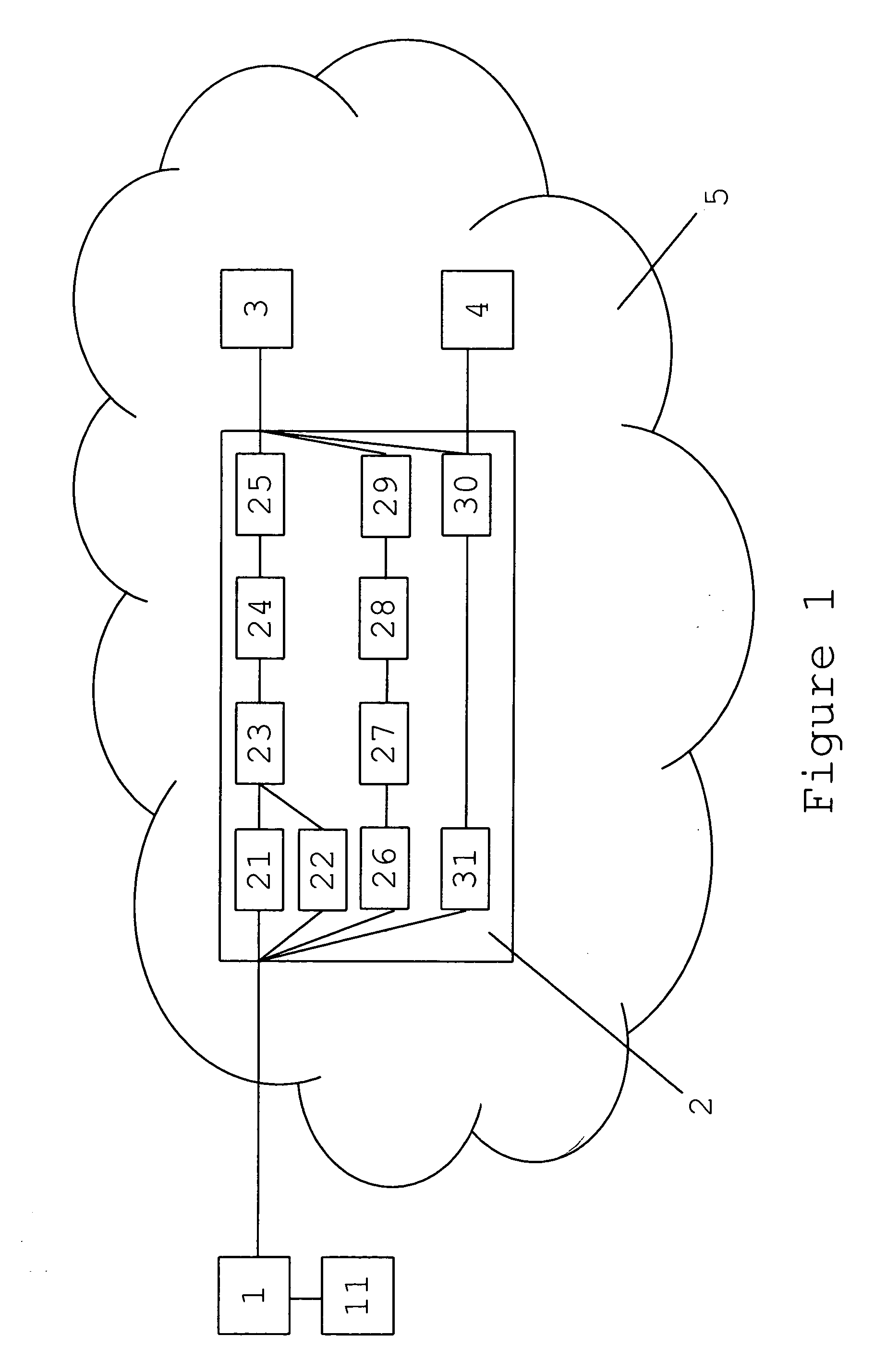Network controlled classification of service tariff class
a network control and service tariff technology, applied in the field of network components for determining service tariff classes, can solve the problems of not enabling measures to charge customers for actual used services, prior art does not provide a solution to prevent customers from misusing telecommunication services
- Summary
- Abstract
- Description
- Claims
- Application Information
AI Technical Summary
Benefits of technology
Problems solved by technology
Method used
Image
Examples
Embodiment Construction
[0029]For the purpose of teaching of the invention, preferred embodiments of the invention are described in the sequel. It will be apparent to the person skilled in the art that other alternative and equivalent embodiments of the invention can be conceived and reduced to practice without departing from the true spirit of the invention, the scope of the invention being only limited by the claims as finally granted.
[0030]The invention provides a solution to prevent misuse of telecommunication services and enables measures to charge customers for actual used services in case of misuse.
[0031]The network checks the correct correlation between the SIM Card, or any other hardware or software providing the user identity, and the user equipment based on the IMEI, or any other hardware or software providing the equipment identity and then store the correlated information into a database. Examples of network components in a mobile packet switched network that can perform the correlation check ...
PUM
 Login to View More
Login to View More Abstract
Description
Claims
Application Information
 Login to View More
Login to View More - R&D
- Intellectual Property
- Life Sciences
- Materials
- Tech Scout
- Unparalleled Data Quality
- Higher Quality Content
- 60% Fewer Hallucinations
Browse by: Latest US Patents, China's latest patents, Technical Efficacy Thesaurus, Application Domain, Technology Topic, Popular Technical Reports.
© 2025 PatSnap. All rights reserved.Legal|Privacy policy|Modern Slavery Act Transparency Statement|Sitemap|About US| Contact US: help@patsnap.com



